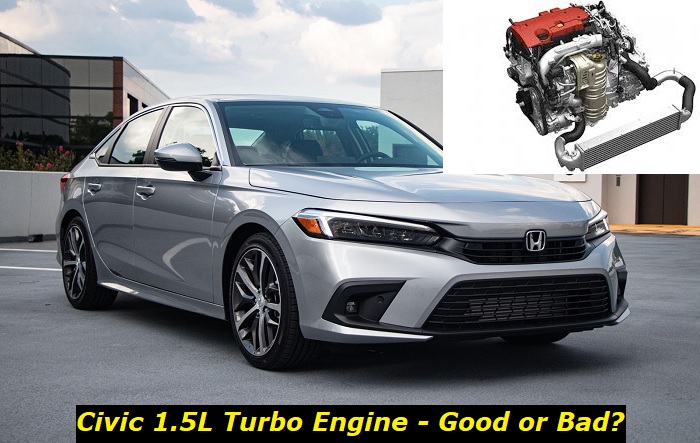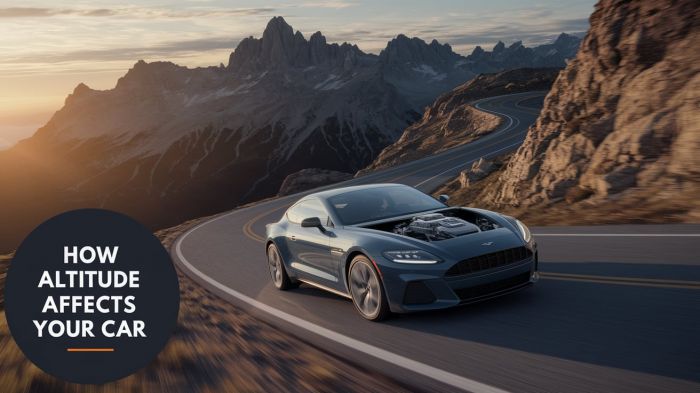The new Civic is one of the most popular vehicles and it certainly deserves our attention. It's the top-rated car that sells an enormous number of cars in the US. Since 1984, American buyers, on average, bought more than 200,000 and in many years even more than 300,000 Civics a year but in 2022 when the sales dropped to 133,000 vehicles. This is the best statistics we've ever seen in the world of cars.
Today, we'll tell you about a pretty popular engine for the new Honda Civic - the 1.5L turbocharged L15B7 option that is available in the 2023 model. The engine is really interesting in terms of power, driving emotions, fuel consumption, and many other important factors. We still can't say that it comes without its problems, so we'll have something to talk about today.

Key features and my opinion about the engine
- Production years:2016-now
- Average lifespan of L15B7:160,000-180,000
- Fuel supply type:direct injection
- Power range:176-205 hp
- Fuel efficiency:good
- Engine block material:aluminum
- Engine reliability score:medium
- The most common problems:no lifters, turbocharger problems, ignition coils don't live long, oil leaks and consumption.
What should you know about the 1.5L turbocharged engine in the Civic?
This is the L4 engine with the turbocharger that is offered in higher and more expensive trims. The base engine for this vehicle is the 2-liter non-turbo powertrain which is, in our opinion, the better option for those who want a durable vehicle with fewer problems on the way. But if you want more aggression in your everyday driving, then the 1.5L Turbo is what you need.
You will need to buy the EX/EXL or Touring model which start at $27,000 plus to get this engine. Also, the gain of power doesn't seem that great - the turbocharged engine only offers 22 more horsepower than the non-turbo version because the 1.5L Turbo is obviously smaller in displacement. So, here come some questions.
But let's look at key facts about the 1.5L Turbo L15B7 engine in the Civic:
- this is a 4-cylinder engine that is equipped with direct injection and offers 180 horsepower and 177 lb-ft of torque which is not bad;
- the EX/EX-L trim is only offered with CVT transmission while the Touring Hatchback has the option of the manual transmission for a sportier feel when you drive;
- the engine doesn't have hydraulic lifters which makes it a dinosaur in the world of modern technology and makes you spend more on maintenance;
- the timing system is driven by the chain - this is a common solution now but the chain will need replacement at 100K miles or so and it's quite expensive;
- the VTC (Valve Timing Control) is presented here for intake and exhaust camshafts making it quite an efficient and precise engine;
- the turbocharger is just an average unit with nothing to talk about - should be really reliable and cause minimum problems.
The 1.5L Turbo is not really fast. It can go 0-60 mph in 7 seconds and some independent tests show about 8 seconds which makes it nonsense to buy for those who love speed. We believe the small displacement and some emission-oriented settings in the software lead to this problem. But overall, the engine offers cool emotions when you drive the new Civic.
Also, look at gas mileage. The 1.5L Turbo Civic shows about 33 MPG in the city and 42 MPG on highways which is ridiculously good for such power. But we should also say that the 2-liter non-turbo engine is only slightly worse in terms of gas mileage. So, if we compare these two engines, it's still not clear which one you should buy.
How many miles will the 1.5L turbo engine last in the Civic?
Turbocharged engines are almost always less durable than their non-turbo counterparts. We've been following the success of this engine codenamed L15B since 2013. The L15B7 model that powers the new Civic has only one important change - additional VCT for the exhaust camshaft. But overall, it's the same engine with the same technology. And we can say for sure that this engine will last about 150,000 miles if it gets good maintenance.
You shouldn't believe though that within this period you won't get any problems. Some of the major issues will start getting on your nerves at 60-70 thousand miles. Some of these issues are just something you'll need to put up with. Some of them will need an immediate reaction. If you don't address minor problems wisely and don't provide the engine with needed maintenance, it will die much faster than average.
Also, aggressive driving kills it pretty fast. But when we are talking about the car overall, the CVT will die faster than the engine being able to drive successfully about 100,000 miles. So, this Honda is not to be honored as the most durable Honda in history. Not at all.
What are the common problems with the 1.5L Turbo engine in the Civic?
We've noticed that more and more place we have to leave for problems section in our articles about modern engines. Yes, they have some issues, and engineers make magic to squeeze them into the emission standards along with saving their great power. So, we'll cover some of the most commonly reported problems that happen with the L15B7 engine in the new Civic.
Here they are:
1. Oil consumption
Starting at 50,000 miles, you can expect oil consumption to rapidly grow in this engine. The unit has an aluminum block, so any kind of deep repair is not possible. Changing piston rings and valve seals helps for some time but it costs a fortune, so it doesn't make much sense. Experienced mechanics recommend checking oil levels regularly to avoid low levels and some problems that can ruin the whole engine.
The oil consumption problem is one of the most often reported issues with the L15B engine series, so this is not your fault. This is an engineering issue and you should just keep it in mind.
2. Ignition coils life expectancy
Coils don't live too long in this engine, unfortunately. They tend to bother you every 20-30 thousand miles and they cost quite a lot. Again, you won't change that with good maintenance or anything else - just be prepared to pay some money and change coils every now and then. Also, spark plugs may be destroyed by faulty coils so check them during every maintenance and don't ignore this issue for too long.
3. No hydraulic lifters
Lifters would help you avoid paying for regular valve adjustments. But in this engine, lifters are not presented. The recommended interval for valve adjustment is 30,000 miles, so you will have to pay for it quite often if you drive a lot. Again, this is going to make your driving more expensive. Poorly adjusted valves lead to bad gas mileage, loss of power, and all other bad consequences that make driving your Civic much less fun.
4. Direct injection issues
These engines, like any other direct injection gasoline units, will develop carbon buildup on valves after some time. We recommend cleaning this buildup at least every 60,000 miles which is one more reason to save up some money if you own the Civic.
Unfortunately, there is nothing you can do to prevent the buildup. Although it's not really dangerous for the vehicle, it needs proper cleaning, otherwise, the engine will malfunction and won't allow you to use all its potential.
5. Timing chain issues
All L15B engines have this problem at about 100K miles. The engine starts rattling and can even jump if not replaced on time. It's not a huge problem but again, you will need to pay some money to have it replaced. Actually, the high price and complexity of maintenance in this engine are the key bad issues you should bear in mind.
What should you remember to drive the 1.5L Turbo Civic longer?
Well, you should remember that this is not the engine for poor people. It requires a lot of expensive maintenance and repairs and it's going to die at about 150K miles. Up to this point, you will have to pay for dozens of ignition coils, 5-6 valve adjustment sessions, one chain replacement, etc. Also, some other not-so-common issues are possible.
Here's what can also prolong the life expectancy of the L15B7 engine:
- Non-aggressive driving;
- High-quality Honda parts;
- High-quality filters and fluids;
- High-quality maintenance (labor);
- Warming for 30-45 seconds before driving (don't tell nature activists we told you that);
- Quick addressing of common issues.
But even if you keep up with all the maintenance requirements, the engine is going to die sooner than you may expect. 150K miles is not that much for a cool Honda engine, isn't it? We find this engine option a little weird for the Civic because you may get the 2-liter non-turbo option cheaper and only lose 22 horsepower but get 50K miles more of life expectancy.
We wouldn't consider the 1.5L turbo engine even though it's not the worst small turbocharged powerplant in the world.
About the authors
The CarAraC research team is composed of seasoned auto mechanics and automotive industry professionals, including individuals with advanced degrees and certifications in their field. Our team members boast prestigious credentials, reflecting their extensive knowledge and skills. These qualifications include: IMI: Institute of the Motor Industry, ASE-Certified Master Automobile Technicians; Coventry University, Graduate of MA in Automotive Journalism; Politecnico di Torino, Italy, MS Automotive Engineering; Ss. Cyril and Methodius University in Skopje, Mechanical University in Skopje; TOC Automotive College; DHA Suffa University, Department of Mechanical Engineering






Add comment